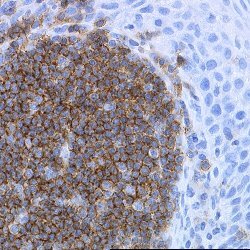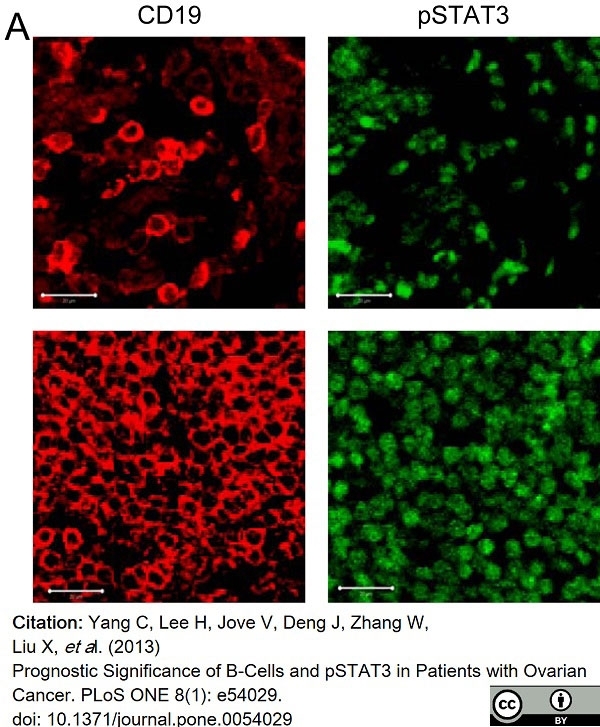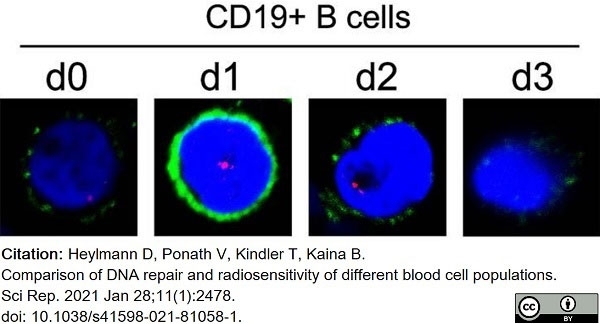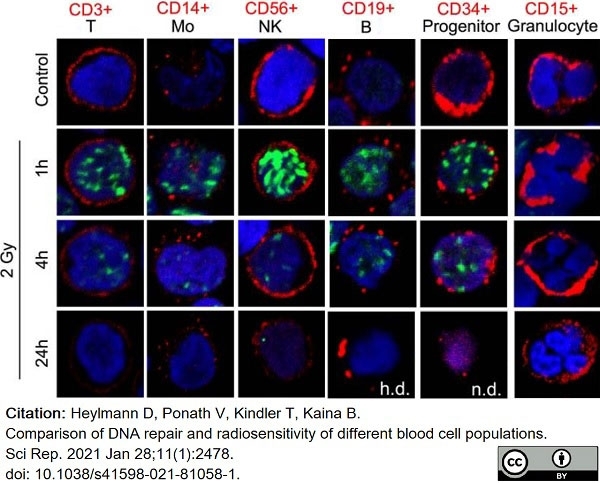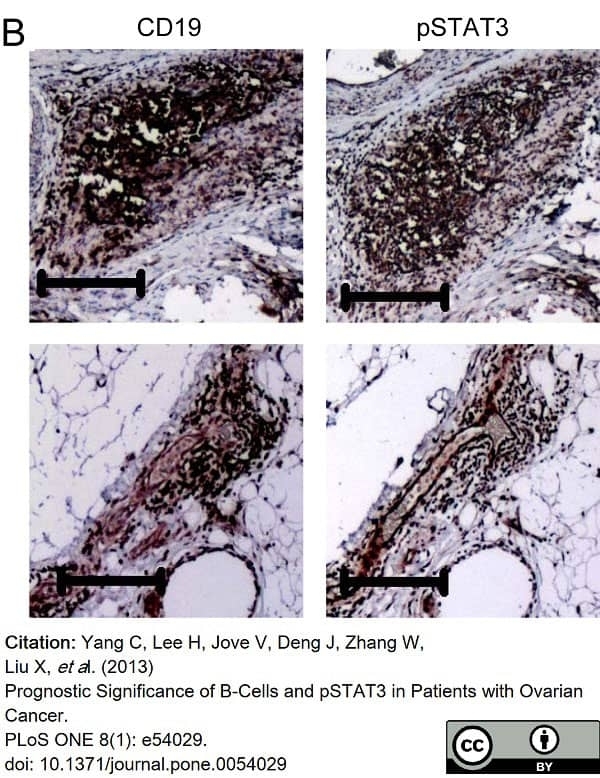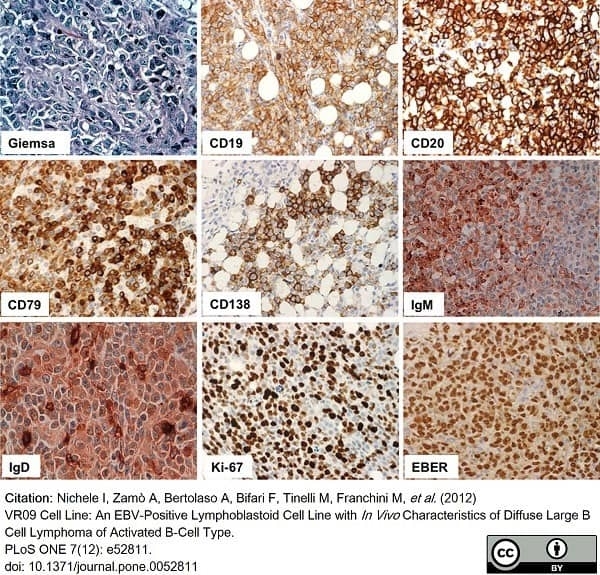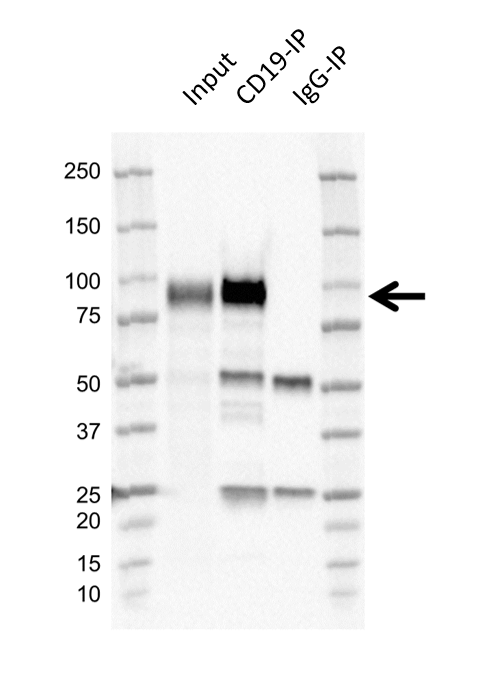CD19 antibody | LE-CD19








Mouse anti Human CD19
- Product Type
- Monoclonal Antibody
- Clone
- LE-CD19
- Isotype
- IgG1
- Format
- Purified
- Specificity
- CD19
| Mouse anti Human CD19 antibody, clone LE-CD19 recognizes an epitope within the C-terminal cytoplasmic tail sequence of human CD19, a single pass type I transmembrane glycoprotein containing two C2 type Ig-like domains in the N-terminal extracellular region and four potential phosphorylation sites for tyrosine together with a single serine in the cytoplasmic region. Human CD19 is expressed on virtually all cells of the B-cell lineage with the exception of plasma cells and plays a regulatory role in B-cell differentiation and proliferation. B-cells are essential for antibody production and mutations in the CD19 gene can lead to an immunodeficiency syndrome, CIVD3 characterized by hypogammaglobulinemia leading to recurrent infections and the inability to mount an antibody mediated response to immune insult. Although immunoglobulin production is impaired B-cell precursors appear in normal numbers together with some reduction in more mature B-cell forms (van Zelm et al. 2006). B-cells have also been implicated in the progression and pathogenesis of multiple sclerosis and are common components of both active and chronic MS lesions and well as the CSF (Ritchie et al. 2004) Mouse anti Human CD19 antibody, clone LE-CD19 has been successfully employed for the immunohistochemical demonstration of CD19 in formalin fixed, paraffin embedded tissues (Streeck, H. et al. 2011) and for the detection of CD19 in cell lysates by Western blotting. |

|
- Target Species
- Human
- Product Form
- Purified IgG - liquid
- Preparation
- Purified IgG prepared by affinity chromatography on Protein A from tissue culture supernatant
- Buffer Solution
- Phosphate buffered saline
- Preservative Stabilisers
0.09% Sodium Azide - Carrier Free
- Yes
- Immunogen
- CD19 peptide CGPDPAWGGGGRMGTWSTR (C-terminus) coupled to KLH.
- Approx. Protein Concentrations
- IgG concentration 1.0 mg/ml
- Fusion Partners
- Spleen cells from immunised BALB/c mice were fused with cells of the X63-Ag8.653 myeloma cell line.
- Regulatory
- For research purposes only
- Guarantee
- 12 months from date of despatch
- Acknowledgements
- PrecisionAb is a trademark of Bio-Rad Laboratories
Avoid repeated freezing and thawing as this may denature the antibody. Storage in frost-free freezers is not recommended.
| Application Name | Verified | Min Dilution | Max Dilution |
|---|---|---|---|
| ELISA | |||
| Flow Cytometry 1 | 1/100 | 1/200 | |
| Immunohistology - Paraffin 2 | 1/100 | 1/200 | |
| Immunoprecipitation | |||
| Western Blotting | Reducing conditions |
- 1 Membrane permeabilization is required for this application. The use of Leucoperm (Product Code BUF09) is recommended for this purpose.
- 2This product requires antigen retrieval using heat treatment prior to staining of paraffin sections. Sodium citrate buffer pH 6.0 is recommended for this purpose
The PrecisionAb label is reserved for antibodies that meet the defined performance criteria within Bio-Rad's ongoing antibody validation programme. Click here to learn how we validate our PrecisionAb range. Where this antibody has not been tested for use in a particular technique this does not necessarily exclude its use in such procedures. Suggested working dilutions are given as a guide only. It is recommended that the user titrates the antibody for use in their own system using appropriate negative/positive controls.
- Flow Cytometry
- Use 10ul of the suggested working dilution to label 1x106 cells in 100ul.
- Histology Positive Control Tissue
- Tonsil
| Description | Product Code | Applications | Pack Size | List Price | Your Price | Quantity | |
|---|---|---|---|---|---|---|---|
| Mouse IgG1 Negative Control | MCA928 | F | 100 Tests |
|
Log in | ||
| List Price | Your Price | ||||||
|
|
Log in | ||||||
| Description | Mouse IgG1 Negative Control | ||||||
References for CD19 antibody
-
Inoue, T. et al. (2010) Differential expression of glycogenes in tonsillar B lymphocytes in association with proteinuria and renal dysfunction in IgA nephropathy.
Clin Immunol. 136 (3): 447-55. -
Streeck, H. et al. (2011) Epithelial adhesion molecules can inhibit HIV-1-specific CD8⁺ T-cell functions
Blood. 117: 5112-22. -
Ogembo, J.G. et al. (2012) SIRPα/CD172a and FHOD1 Are Unique Markers of Littoral Cells, a Recently Evolved Major Cell Population of Red Pulp of Human Spleen.
J Immunol. 188: 4496-505. -
Nichele, I. et al. (2012) VR09 cell line: an EBV-positive lymphoblastoid cell line with in vivo. characteristics of diffuse large B cell lymphoma of activated B-cell type.
PLoS One. 7 (12): e52811. -
Yang, C. et al. (2013) Prognostic significance of B-cells and pSTAT3 in patients with ovarian cancer.
PLoS One. 8 (1): e54029. -
Herting, F. et al. (2014) Enhanced anti-tumor activity of the glycoengineered type II CD20 antibody obinutuzumab (GA101) in combination with chemotherapy in xenograft models of human lymphoma.
Leuk Lymphoma. 55 (9): 2151-60. -
Heylmann, D. et al. (2021) Comparison of DNA repair and radiosensitivity of different blood cell populations.
Sci Rep. 11 (1): 2478.
- RRID
- AB_566586
- UniProt
- P15391
- Entrez Gene
- CD19
- GO Terms
- GO:0005515 protein binding
- GO:0005057 receptor signaling protein activity
- GO:0005887 integral to plasma membrane
- GO:0006968 cellular defense response
Please Note: All Products are "FOR RESEARCH PURPOSES ONLY"
View all Anti-Human ProductsAlways be the first to know.
When we launch new products and resources to help you achieve more in the lab.
Yes, sign me up